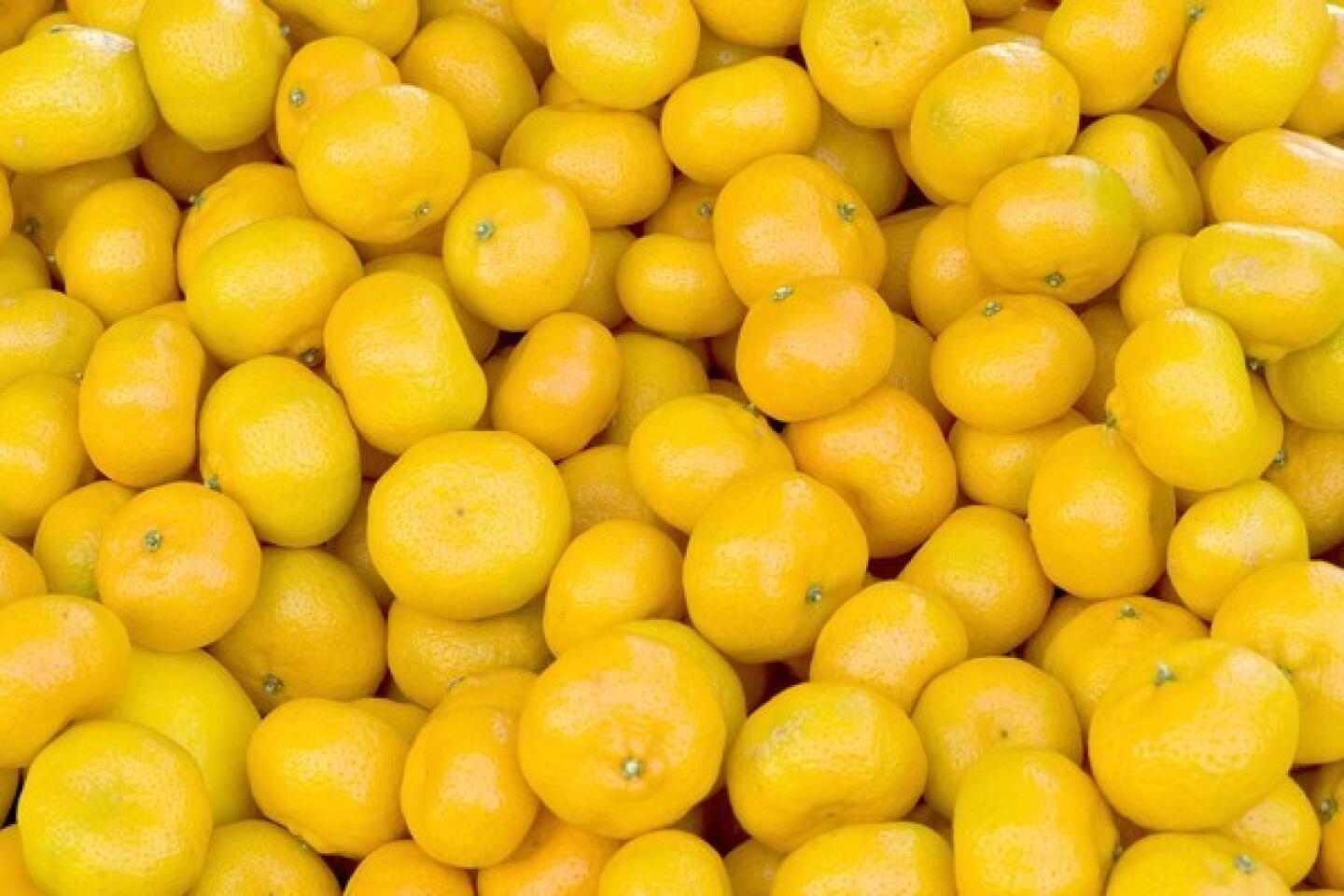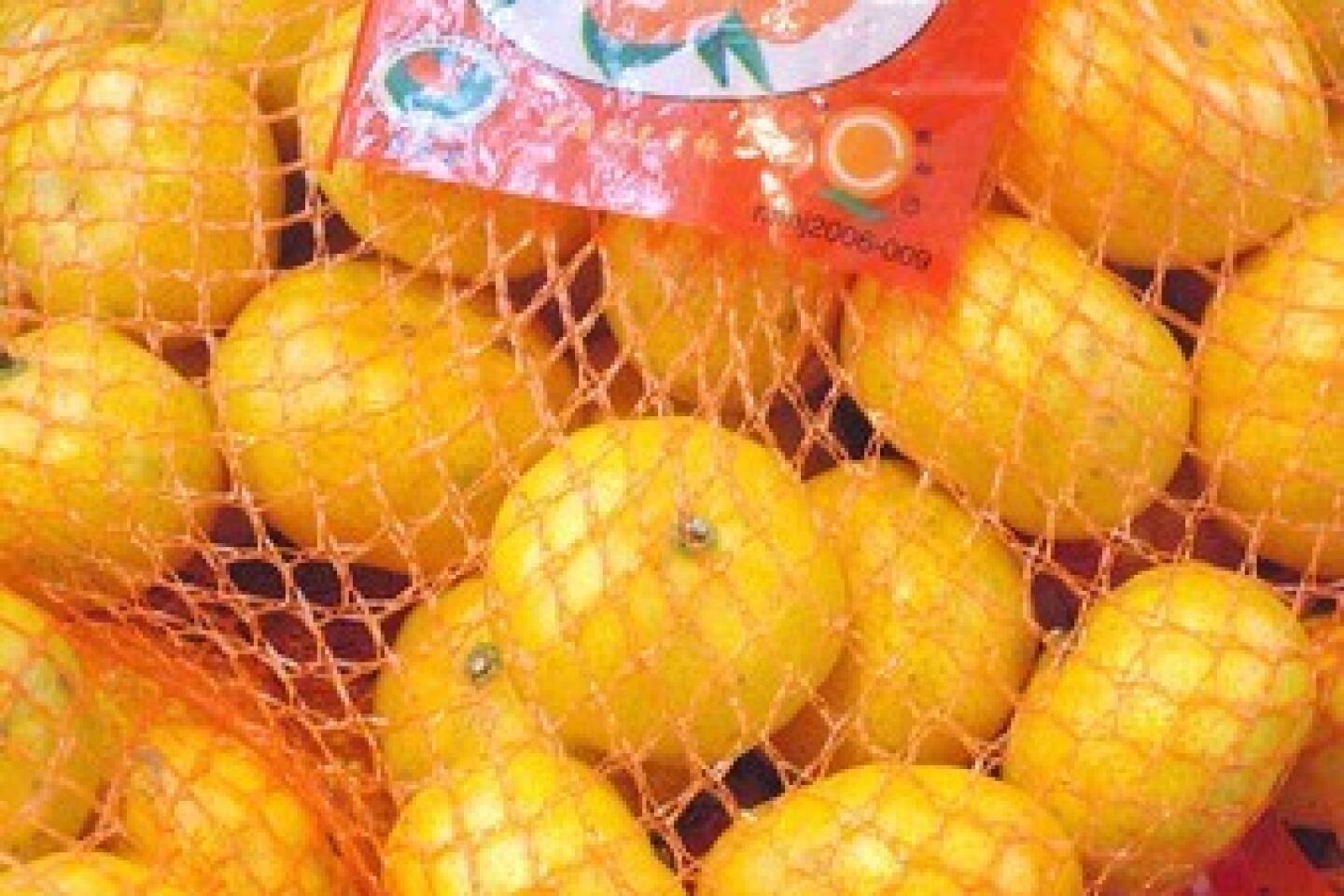The Seedless Kishu, a small but mighty mandarin
- Share via
Adorable and irresistible, the Seedless Kishu is one of the most delicious of mandarins, smaller than a golf ball but easy to peel, tender, juicy, fragrant and sweet. Until recently it was very difficult to find, even at farmers markets, but at least a dozen growers now have producing trees of these small wonders, and the fruits are becoming more readily available.
The Seedless Kishu derives from an ancient group of small-fruited mandarin varieties that originated in China. A related seeded variety called Ruju was offered as tribute in 1060 under the Tang Dynasty, and in the Song Dynasty it was considered the best mandarin variety. Today the Nanfengmiju, derived from Ruju, is one of the most widely grown mandarins in China, particularly in Jianxi province, where it originated.
On a citrus research trip to China in November 2008, I frequently encountered this fruit, which seems to be similar to our Seedless Kishu, although it is earlier in season and has slightly firmer flesh and a tighter rind; recent studies of DNA markers by Tokurou Shimizu, a Japanese citrus scientist, suggest that Nanfengmiju and Kishu may be very similar.
Varieties of this kind were brought centuries ago to Japan, where they were called Kishus and were the most popular citrus until 1880, when satsumas, a larger type, supplanted them. At least four varieties of Kishus are known, of which three have seeds and one is seedless.
Kishus have been present in California for more than a century but were not grown commercially until recently. B.M. Lelong described the Kishu in an 1888 list of Japanese citrus varieties as “one of the best for table use,” but by 1902 he considered the minuscule variety unsuited for commercial cultivation. In 1943, H.J. Webber wrote that only a few trees existed in Florida and California, and these were the seeded forms.
Budwood of the Seedless Kishu arrived from Japan in 1983 at the UC Riverside Citrus Variety Collection, where, once the variety started to fruit, it quickly became a favorite of the staff and visitors. It was cleaned up of tristeza virus, a common plant disease, and released to nurseries.
Jim Churchill, a citrus grower in Ojai who was the first to plant Seedless Kishus commercially 13 years ago, found that the fruit sold well because of its superb flavor, and he now has 780 trees; at least five other growers in his area have plantings. It hasn’t been easy, though. As the trees have gotten older, the size of the fruits, never very large, has diminished, making harvest and sorting even more tedious and expensive, says Churchill.
When he visited Japan with his wife, Lisa Brenneis, two years ago, and told a citrus scientist that he was growing Seedless Kishus in California, the man could hardly repress a guffaw as he asked why anyone would grow such a tiny, obsolete variety.
“We said, ‘Because we can sell it, because it tastes fabulous and children love it and will eat it in preference to candy,’ ” said Churchill.
The Seedless Kishu season in much of Southern California runs from Thanksgiving through January, after which the fruits get puffy and lose the acidity needed to make them interesting; the harvest in Ojai is a month or so later.
Churchill Orchard will bring Kishus to the Ojai farmers market this Sunday and also sells by mail order. Two growers from De Luz also sell them: Garcia Organic Farms at the Santa Monica Saturday (organic), Sunday and Wednesday markets; and Coyote Growers (Jeanne and Jim Davis) at Torrance (Saturday), Hollywood (Sunday) and Beverly Hills (Sunday).
More to Read
Eat your way across L.A.
Get our weekly Tasting Notes newsletter for reviews, news and more.
You may occasionally receive promotional content from the Los Angeles Times.













